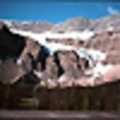Geosystems on land are diverse and continually changing. They result from processes originating deep in the Earth's interior (like plate tectonics) but are subsequently molded into shape through the interaction of rocks with the atmosphere, hydrosphere, and cryosphere.
To develop a rich understanding of Earth's terrestrial geosystems, begin with this introductory overview, and then explore the many articles below. Investigate the processes behind beach and dune formation, and how winds, as well as water, shape the coastline. Learn why streams have different flows, and how they carve out their valleys and make their own ways. Read how landfills contaminate groundwater, and how this contamination is assessed. Explore caves and karstic regions. Learn about different kinds of aquifers and their importance for humanity. Jump into the Great Lakes and discover the chemosynthetic organisms there which give us clues about early life on our planet.














